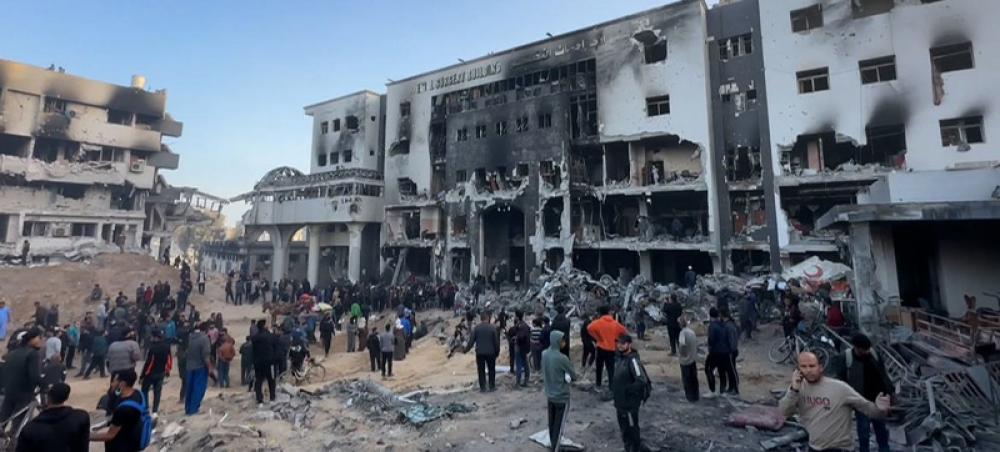Just Earth News | @justearthnews | 02 Apr 2024, 11:44 pm Print
 Hamas-Israel
Hamas-Israel Photo Caption: Footage of destruction of Al-Shifa hospital in Gaza. Photo Courtesy: UN News
The cost of damage to critical infrastructure in Gaza is estimated at around $18.5 billion according to a new report released on Tuesday (April 2, 2024) by the World Bank and the United Nations, with financial support of the European Union.
That is equivalent to 97% of the combined GDP of the West Bank and Gaza in 2022.
The Interim Damage Assessment report used remote data collection sources to measure damage to physical infrastructure in critical sectors incurred between October 2023 and end of January 2024.
The report finds that damage to structures affects every sector of the economy.
Housing accounts for 72% of the costs.
Public service infrastructure such as water, health and education account for 19%, and damages to commercial and industrial buildings account for 9%. For several sectors, the rate of damage appears to be leveling off as few assets remain intact.
An estimated 26 million tons of debris and rubble have been left in the wake of the destruction, an amount that is estimated to take years to remove.
The report also looks at the impact on the people of Gaza. More than half the population of Gaza is on the brink of famine and the entire population is experiencing acute food insecurity and malnutrition.
Over a million people are without homes and 75% of the population is displaced. Catastrophic cumulative impacts on physical and mental health have hit women, children, the elderly, and persons with disabilities the hardest, with the youngest children anticipated to be facing life-long consequences to their development.
With 84% of health facilities damaged or destroyed, and a lack of electricity and water to operate remaining facilities, the population has minimal access to health care, medicine, or life-saving treatments. The water and sanitation system has nearly collapsed, delivering less than 5% of its previous output, with people dependent on limited water rations for survival. The education system has collapsed, with 100% of children out of school.
The report also points to the impact on power networks as well as solar generated systems and the almost total power blackout since the first week of the conflict. With 92% of primary roads destroyed or damaged and the communications infrastructure seriously impaired, the delivery of basic humanitarian aid to people has become very difficult.
The Interim Damage Assessment Note identifies key actions for early recovery efforts, starting with an increase in humanitarian assistance, food aid and food production; the provision of shelter and rapid, cost-effective, and scalable housing solutions for displaced people; and the resumption of essential services.
- Why Apple suddenly wants millions of iPhone users to quit Chrome today
- Deadly decision on Grossglockner: Austrian man charged after girlfriend freezes to death
- Ray-Ban Meta (Gen 2) Launch in India: Check out specifications
- Apple Watch can now alert you about high blood pressure—Here’s what’s new in India
- Spanish tourist stabbed at Berlin Holocaust Memorial testifies in terror trial



-1763561110.jpg)


